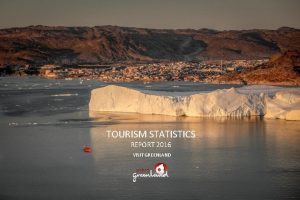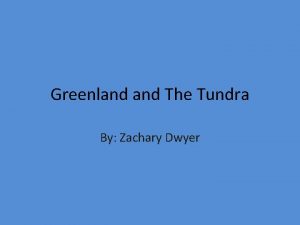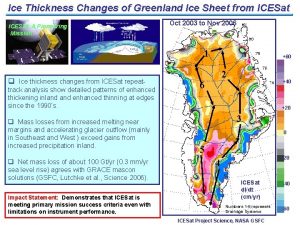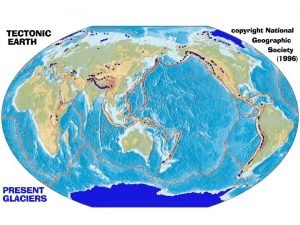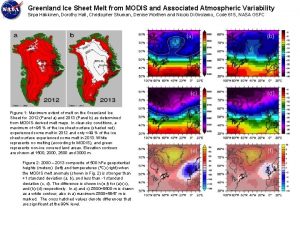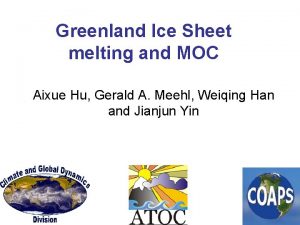Greenland Ice Sheet Surface Temperature and Mass Loss






- Slides: 6

Greenland Ice Sheet Surface Temperature and Mass Loss: 2000– 2006 Dorothy Hall, Code 614. 1, NASA GSFC Surface temperature of the Greenland Ice Sheet is near 0 C around its southern margins during the melt season. This highlights the metastability of parts of the ice sheet, and the susceptibility to rapid melt if air temperature continues to increase. Accurate prediction of mass loss relies, in part, on surface temperature and knowledge of melt timing because surface melt can travel rapidly to the ice-sheet bed and cause accelerated glacier movement. Figure 1 Figure 2 Mascon=ice mass (Gigaton) Hydrospheric and Biospheric Sciences Laboratory Satellite-derived surface temperatures from MODIS show surface melt, and gravimetry data from GRACE show ice -sheet mass loss. Together, they can provide information about timing and amount of melt.

Name: Dorothy K. Hall / 614. 1 and Scott B. Luthcke / 698 NASA/GSFC E-mail: dorothy. k. hall@nasa. gov and scott. b. luthcke@nasa. gov Phone: 301 -614 -5771 / 301 -614 -6112 References: Hall, D. K. , R. S. Williams, Jr. , K. A. Casey, N. E. Di. Girolamo and Z. Wan, 2006: Satellite-derived, melt-season surface temperature of the Greenland Ice Sheet (2000 -2005) and its relationship to mass balance, Geophysical Research Letters, 33, L 11501, doi: 10. 1029/2006 GL 026444. Hall, D. K. , R. S. Williams, Jr. , S. B. Luthcke and N. E. Di. Girolamo, submitted: Greenland Ice Sheet surface-temperature, melt and mass loss: 2000 – 2006, Journal of Glaciology. Luthcke, S. B. , H. J. Zwally, W. Abdalati, D. D. Rowlands, R. D. Ray, R. S. Nerem, F. G. Lemoine, J. J. Mc. Carthy and D. S. Chinn, 2006: Recent Greenland ice mass loss by drainage system from satellite gravity observations, Science, 19 October 2006, 314(5803): 1286 -1289. Zwally, H. J. , W. Abdalati, T. Herring, K. Larsen, J. Saba, and K. Steffen, 2002: Surface melt-induced acceleration of Greenland ice-sheet flow, Science, 297(5579): 218 -222. Data Sources: MODIS land-surface temperature product & GRACE gravimetry mascon solutions Technical Description of Images: Figure 1. Mean melt season “clear-sky” surface temperature derived from the MODIS 1 -km daily land-surface temperature product. Note that much of the southern part of the ice sheet is close to 0 C indicating its susceptibility to rapid melt if air temperatures rise further. Figure 2. MODIS-derived surface melt (% of ice sheet) and Gravity Recovery and Climate Experiment (GRACE)-derived mass (Gt). When ~1% of the ice sheet experiences surface melt, as determined from the MODIS land-surface temperature product in 2004 and 2005, mass loss, derived from GRACE, is triggered rapidly -- in 15 days (or less), indicating a rapid response of the ice-sheet system to surface melt. Scientific Significance: MODIS provides an accurate (± 2 C) and rapid means to monitor “clear-sky” surface temperature of the Greenland Ice Sheet (Figure 1). Changes in surface temperature may be monitored on a daily, monthly, seasonal and annual basis (Hall et al. , 2006 and submitted). GRACE mascon solutions, averaged for 10 -day periods, provide mass-change information and show significant mass loss from mid-2003 to the present; below 2000 m in 2004 and 2005, the ice sheet lost ~321 and ~444 Gt of mass, respectively (Luthcke et al. , 2006). Using both MODIS and GRACE data (Figure 2) the timing of mass loss (or gain) can be determined following initiation (or cessation) of surface melt. This is critical because rapid movement of surface water to the base on the ice sheet has been shown by Zwally et al. (2002) to initiate glacier acceleration and melt. Thus an increase in surface melt (as monitored using MODIS-derived melt maps) has important implications for the mass balance of the Greenland Ice Sheet. Relevance for future science and relationship to Decadal Survey: In conjunction with laser-altimetry data, a high-priority in the decadal survey, data showing ice-sheet melt and mass loss will be useful for estimating the mass-balance change of the Greenland Ice Sheet. Because the ice sheet contains ~7 m sea-level rise potential, the state of the ice sheet has important implications for the hundreds of millions of the Earth’s coastal inhabitants.

Improved Faraday Rotation Correction for Aquarius David Le. Vine, Code 614. 6, NASA GSFC A unique feature of Aquarius is radiometer channels designed specifically to correct for Faraday rotation (Reference 2). This is done by measuring the correlation of the signal at vertical and horizontal polarization (Reference 3). Aquarius will use this algorithm for the first time from space. The studies indicate that there will be a bias in the measurement due to the non-perfect patterns of the radiometer antennas (the difference between the solid and dashed lines at the bottom of Figure 1) but that the bias is independent of Faraday rotation and can be removed with calibration once in orbit. Hydrospheric and Biospheric Sciences Laboratory Rotation Angle (Deg) Faraday rotation is a change in polarization occurring as electromagnetic waves propagate through the ionosphere. It is significant at low microwave frequencies and important for retrieval of sea surface salinity (Reference 4). Orbital Time (6 sec increments) Figure 1: The panels of the figure illustrate the Faraday rotation angle retrieved during one orbit. At the top is shown the ground track (black) and boresight location of the radiometer antenna (red). At the bottom is the retrieved Faraday rotation angle (solid line) and value expected (dashed line). The index at the bottom indicates time around the orbit in steps of 6 seconds.

Name: David M. Le Vine, NASA/GSFC E-mail: David. M. Le. Vine@nasa. gov Phone: 301 -614 -5640 References: 1. D. M. Le Vine, S. D. Jacob, E. P. Dinnat, P. de Matthaeis, S. Abraham, “The Influence of Antenna Pattern on Faraday Rotation in Remote Sensing at L-band”, IEEE Trans. Geoscience and Remote Sensing, Vol 45, No. 8, August, 2007. 2. D. M. Le Viine, G. S. E. Lagerloef, F. R. Colomb, S. H. Yueh and F. A. Pellerano, “Aquarius: An Instrument to Monitor Sea Surface Salinity from Space”, IEEE Trans. Geoscience and Remote Sensing, Vol 45, No. 7, pp 2040, July 2007. 3. S. Yeuh, “Estimates of Faraday Rotation with Passive Microwave Polarimetry for Microwave Remote Sensing of Earth Surface”, IEEE Trans. Geoscience and Remote Sensing, Vol 38, No. 5, pp. 2434, Sept, 2000. 4. D. M. Le Vine and S. Abraham, “The Effect of the Ionosphere on Remote Sensing of Sea Surface Salinity from Space: Absorption and Emission at L-band”, IEEE Trans Geoscience and Remote Sensing, Vol 40, No. 4, pp 771, April 2000. Data Source: This is a radiative transport model that calculates the signal at the radiometer antenna output (radiometer antenna temperature). It includes sources of direct and reflected microwave signal (e. g. galactic background, sun, atmosphere and ionosphere) and employs realistic antenna patterns and orbit geometry. Technical Description of Image: The panels of the figure illustrate the Aquarius orbit (top) and (bottom) the retrieved rotation angle (Reference 1). The numerical studies indicate that there will be a bias in the measurement due to the non-perfect patterns of the radiometer antennas (the difference between the solid and dashed curves in the bottom panel of the figure) but that the bias is independent of Faraday rotation and can be removed with calibration once in orbit. Scientific Significance: Faraday rotation is a change in polarization occurring as electromagnetic waves propagate through the ionosphere. It is significant at low microwave frequencies and important for retrieval of sea surface salinity (Reference 4). A unique features of the Aquarius radiometer are channels designed specifically to correct for Faraday rotation (Reference 2). This is done by measuring the correlation of the signal at vertical and horizontal polarization (Reference 3). Aquarius will use this algorithm for the first time from space. Since it is possible to determine the total electron content (TEC) from the Faraday rotation, with good calibration Aquarius may also be able to provide global maps of TEC. This is especially valuable over the oceans where ground stations for this measurement are limited. Relevance (future science and Decadal Survey): Faraday rotation is important at L-band is the frequency of choice for monitoring sea surface salinity as well as for future missions to measure soil moisture. This research suggests that the technique being tested on Aquarius to correct for Faraday rotation will be successful. In particular, the bias induced by the radiometer antenna in the estimated rotation angle is small and constant and can be removed during on-orbit calibration (Reference 1).

Shifting currents of the northern Atlantic Ocean Sirpa Hakkinen, Code 614. 2, NASA GSFC Changes in the North Atlantic Current over the past 15 years were tracked using surface drifting buoys. These drifters were released in the subtropics and their locations tracked as they moved around the ocean. In order to track the current, the drifter tracks were recorded for areas flowing into and out of the region 30 -50 W, 35 -45 N. This was done for 178 drifters in periods 1991 -2000 (top) and for 145 drifters in 2001 -2006 (bottom). In the figures, the inflow to the region is indicated by cyan and the outflow by magenta. These data show that there has been a significant shift over the observational period, with considerably more northeastward flow during the period 2001 -2006, as compared with 1991 -2000. These data illustrate the opening of new pathways of flow into Arctic waters north of the British Isles. This finding is important because the increased salinity of the waters flowing to these Nordic Seas could help strengthen the meridional overturning (the global ‘conveyor belt’), and work against the widely predicted slowing of the conveyor induced by global warming Hydrospheric and Biospheric Sciences Laboratory

Name: Sirpa Hakkinen, NASA/GSFC E-mail: Sirpa. Hakkinen@nasa. gov Phone: 301 -614 -5712 References: Sirpa Hakkinen and Peter B. Rhines: Shifting currents of the northern Atlantic Ocean, submitted to Science, under review. Data Source: NOAA/AOML Global Lagrangian Drifting Buoy Data Base Technical Description of Image: Subtropical surface drifter tracks. Drifter tracks entering (cyan) and leaving (magenta) the region (30 -50 W, 35 -45 N): during 1991 -2000, and (B) during 2001 -2006. In (A) the drifter history is followed only through end of 2000. Total number of drifters in (A) is 178 and 145 in (B). Scientific Significance This finding is important because the increased salinity of the waters flowing to these Nordic Seas could help strengthen the meridional overturning (the global ‘conveyor belt’), and work against the widely predicted slowing of the conveyor induced by global warming. These pathways have likely opened and closed before, and now we have the technology of satellite altimetry, surface drifting buoys, deep gliding and drifting probes with which to follow them. While the cause of this abrupt shift is still uncertain, there appear to be coordinated shifts of the winds and storm track overhead, and visible changes in other measures of the circulation changes seen by satellites Relevance for future science and relationship to Decadal Survey: The results show that the pathways of the meridional overturning can change with time. The drifter observations of the changes can be detected also from altimetry (although not shown). Combination of in situ and altimetric measurements will jointly illuminate of the large meridional and horizontal ocean circulation changes. Wind stress measurements from space are important for understanding the physical forcing behind these changes.




